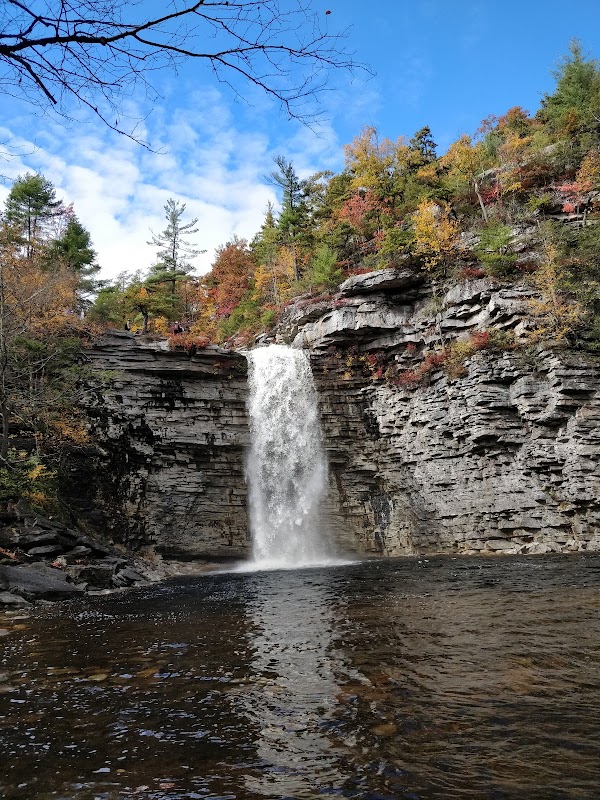
Urban to Wild: Hiking the Old Croton Aqueduct Trail in the Lower Hudson Valley
The Old Croton Aqueduct Trail weaves a striking path from the Bronx’s urban edges to the lush wilderness of Westchester County. This historic, accessible trail invites hikers of all levels to experience a living blend of nature and history just outside New York City.
Choose Your Entry Wisely
Public transit-friendly access points like Van Cortlandt Park offer convenient starts, while Croton Gorge Park provides ample parking and scenic views.
Hydrate Consistently
Bring at least two liters of water; shade is inconsistent, making hydration crucial especially in warmer months.
Footwear Matters
Opt for trail runners or sturdy hiking shoes with tread suitable for mixed gravel and dirt surfaces for better grip and comfort.
Avoid Midday Heat
Start early morning or late afternoon to dodge the sun’s peak intensity and improve wildlife sightings.
Urban to Wild: Hiking the Old Croton Aqueduct Trail in the Lower Hudson Valley
Stretching over 26 miles from the Bronx at the edge of New York City into Westchester County, the Old Croton Aqueduct Trail offers a unique journey where urban grit yields to tranquil wilderness. This historic trail, once the lifeline delivering water to NYC, now challenges hikers with a mostly flat, gravel and dirt path threading through forest patches, wetlands, and quaint villages. Expect an elevation gain of roughly 300 feet—gentle enough for casual walkers yet engaging for seasoned hikers seeking a sustained trek.
Starting close to the roar of city streets, the trail immediately invites you to shed urban noise as towering trees lean in, their leaves whispering stories of time. The Harlem River dares you to look beyond its shifting current, while sections along the Bronx River and Kensico Reservoir remind you water still commands the landscape here. This trail is fiercely itself: rooted in history, self-sustaining nature, and quiet resilience.
Practical preparation is key. Footwear should balance comfort and grip—trail runners or lightweight hiking shoes suit the mixed gravel and dirt surfaces. Carry at least two liters of water, particularly in summer, as shade varies. Timing your hike for early morning or late afternoon bypasses midday heat and amplifies chances of spotting local wildlife.
Trail access points are plentiful—Van Cortlandt Park in the Bronx and Croton Gorge Park are widely favored entry spots. Each offers parking, though weekends can see congestion. Consider using public transit and then hitting the trail on foot for a less crowded start.
Along your trek, notice how the ruins of the aqueduct’s stone arches act like silent sentinels, reminders of the engineering feat powering a metropolis. The forest floor is alive with darting chipmunks and birdsong that drives the quieter rhythm of this green corridor.
By engaging with this trail, you’re stepping into a living connection between city hustle and nature's persistence. It’s an adventure marked by steady terrain but rich sensory shifts, from the concrete footsteps of history to the wild pulse of the Lower Hudson’s woods.
Whether you're logging miles for fitness or chasing moments of quiet discovery, the Old Croton Aqueduct Trail serves as a practical yet inspiring escape where urban strain loosens and the wild insists on your full attention.
Nearby Trips
All Adventures
Boat Charters
Water Activities
Adventures near Yonkers, New York
Discover the unique and memorable adventures that make Yonkers, New York special.
Frequently Asked Questions
How long is the Old Croton Aqueduct Trail and can it be done in one day?
The full length of the trail is approximately 26 miles. While some seasoned hikers complete it in a day, most prefer splitting it over two or more days, or choose shorter sections for a half-day hike.
Is the trail suitable for kids or casual walkers?
Yes, the trail is mostly flat and accessible, making it family-friendly and ideal for casual walkers. Just be mindful of occasional uneven surfaces and bring sufficient water.
Are dogs allowed on the trail?
Dogs are permitted but must be kept on a leash at all times. Carry waste bags to keep the trail clean and respect other users.
What wildlife might I encounter on the trail?
Expect to see chipmunks, various songbirds, occasional hawks, and in wetter areas, frogs and turtles. Early mornings improve chances of wildlife sightings.
Can I access the trail by public transportation?
Yes, several trailheads near New York City and Westchester County are accessible via subway and Metro-North trains, such as Van Cortlandt Park station and Croton-Harmon.
Are there restroom facilities along the trail?
Restrooms are available at major park entry points like Van Cortlandt Park and Croton Gorge Park, but are sparse along the trail itself. Plan accordingly.
Recommended Gear
Trail Running Shoes
Provides traction and comfort suited for the mixed gravel and dirt trail surfaces.
Hydration Pack or Water Bottles
Ensures consistent hydration during warmer months when shade and water access are limited.
Light Rain Jacket
Protects against spring showers and wind, keeping you dry on damp trail sections.
Warm Layers
Helps regulate temperature as mornings and evenings turn crisp, especially during fall hikes.
Local Insights
Hidden Gems
- "Sunnyvale Brook Overlook - a quiet spot with reflective waters and abundant birdlife, rarely crowded."
- "Quarry Ruins near Ossining - remnants of the original aqueduct construction offer a unique glimpse into 19th-century engineering."
Wildlife
- "Eastern chipmunks that scurry ahead like nature's tiny guides"
- "Red-tailed hawks often circling high above the treetops"
- "Wood frogs and painted turtles inhabiting wetlands along the route"
History
"Originally built in the 1840s to deliver water to NYC, the aqueduct was a critical infrastructure project that shaped the region. The trail runs alongside remnants of stone arches and brick conduits, standing as testimony to industrial ingenuity."
